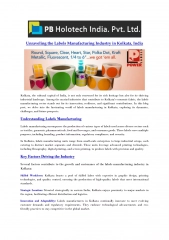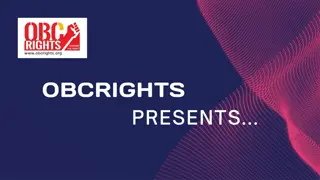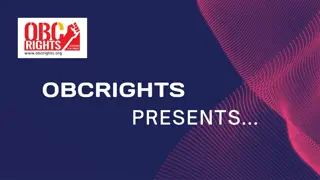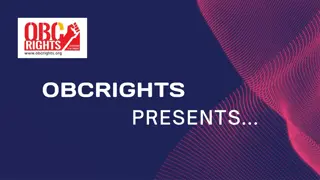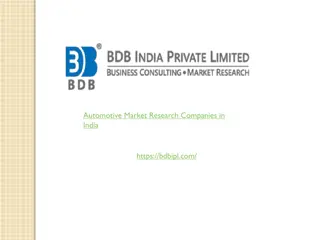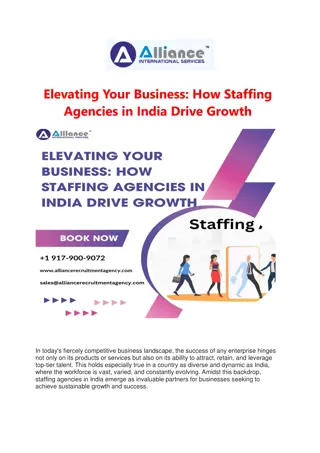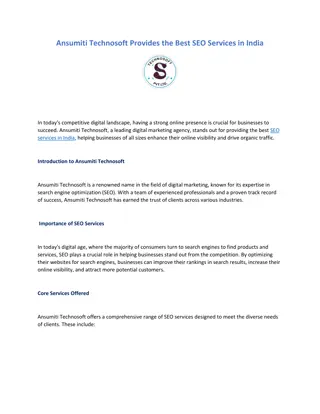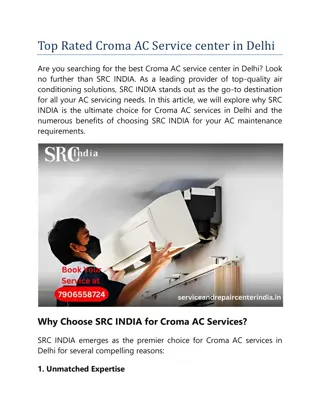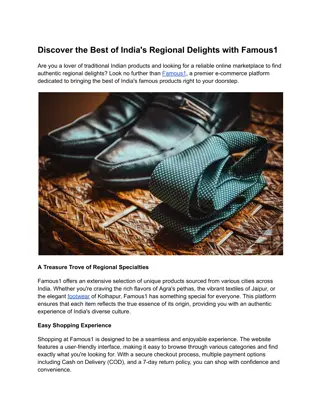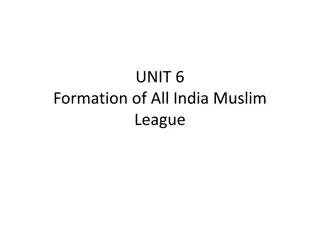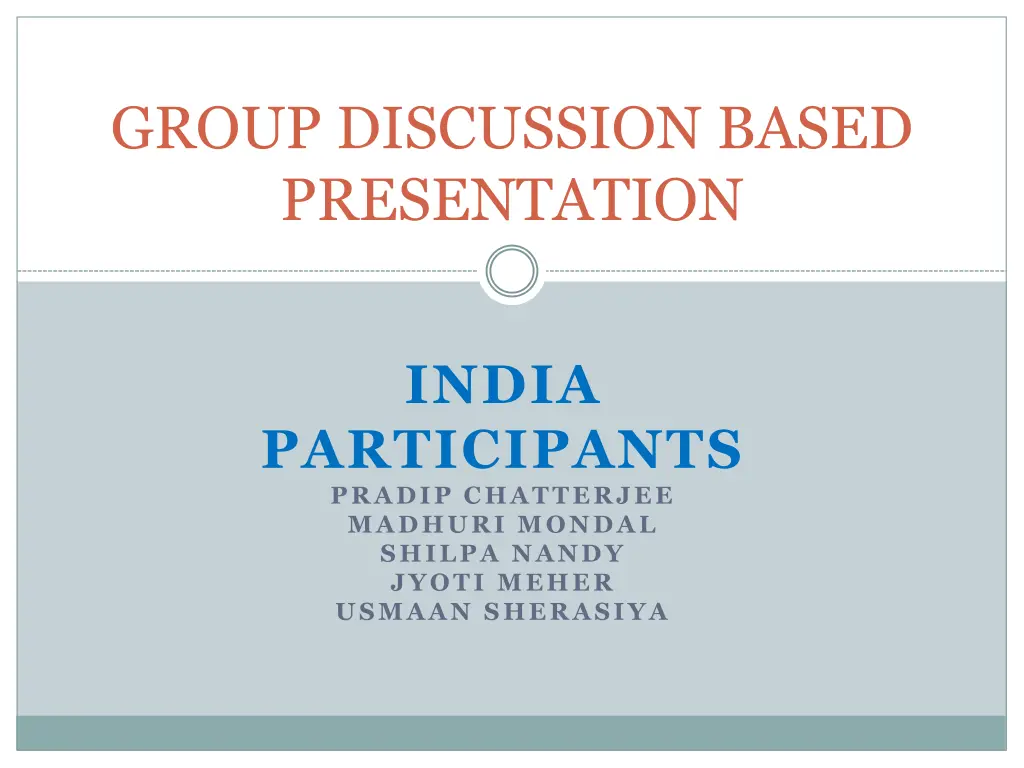
Improving Access to Social Development for Small Scale Fishing Communities
Explore the challenges faced by small scale fishing communities in India regarding access to essential services such as health, education, housing, sanitation, and water. Discuss disparities in social development parameters and explore potential solutions to improve access and support for these communities. Dive into the role of fishing community organizations and fisheries administration in addressing these issues.
Download Presentation

Please find below an Image/Link to download the presentation.
The content on the website is provided AS IS for your information and personal use only. It may not be sold, licensed, or shared on other websites without obtaining consent from the author. If you encounter any issues during the download, it is possible that the publisher has removed the file from their server.
You are allowed to download the files provided on this website for personal or commercial use, subject to the condition that they are used lawfully. All files are the property of their respective owners.
The content on the website is provided AS IS for your information and personal use only. It may not be sold, licensed, or shared on other websites without obtaining consent from the author.
E N D
Presentation Transcript
GROUP DISCUSSION BASED PRESENTATION INDIA PARTICIPANTS PRADIP CHATTERJEE MADHURI MONDAL SHILPA NANDY JYOTI MEHER USMAAN SHERASIYA
Who is a Small Scale Fisher? Two cylinder boat and upto 30 hp can be called small scale fishworkers. They are themselves into fishing activities like fisher, small retailer in fish vending processes, net sewers, sorters, dryers. They do for their livelihood and not for commercial purposes.
GROUP DISCUSSION Q.1 In your national context or local context, do small scale fishing communities, including women, men and children, have affordable (and adequate) access to health, education, housing, sanitation, drinking water and energy facilities and services , commensurate with that of other citizens? How can access to these facilities and services be improved? What role can be seen for fishing community organizations and fisheries administration?
Access to Social Development Parameters In Maharashtra, compare to other citizens the kohliwadi people are deprived of the facilities like housing .In health segment, no special facility is available like fishermen but they enjoy like common citizens. But as marine fishermen they suffer from few special diseases but these needs are not cater by the government. For eg.There is a thermal power in Tarapur district where women are getting affected with disease like cancer due to radiation . The fishing community is so large but only 2% are counted as OBC class and all children are receiving the facilities like other category of children in terms of education. In Gujarat , in terms of access to health, there is a lot of disparity in vaccination drive like (polio) no such drive t took place since 2005. In Bengal, The vaccination drives are very successful but no special schemes are available for fisherfolk community . Education is received by children in common category. No special facility as fishermen community s children. In our state the temporary houses which we called palaghar Access related to drinking water facilities, energy services are disturbed in some places like THE Kutch area. The reason is that the access is better in inland villages and not present in the villages near to coast . In Bengal, additional problem is that aquaculture fishing is affecting the drinking water supply in fisherfolk villages
The general health facilities are not readily available in the fishing villages due to non-functioning of health centres, doctors are mostly unavailable, medicine kits are not adequate. There is a need for special health care system for fishers with rescue facility with sudden sickness on sea Toilet facilities are very few in all over India In Andaman, Distance alert system is present but are inadequate
Role of FOs and FAs Demands to be placed in the local panchayats and infront of multiple departments and public authorities. For example in Bengal, Fisheries department as the department itself have few schemes like providing drinking water mechanical boring pumps and few are given by PHE department. No infrastructural facility in the market in the palghar district as there is lack of market for fish vendors. They are struggling for this and negotiations going on . All the facilities which are demanded by the fisherfolk community needs to be enlisted and to be placed in the fisheries department and all states organisations are working in placing these issues. Fisheries administration should allocate a budget for building modern facilities like market, landing centres, toilet specially for women, restrooms and cr che. Also anganwadi should work more effectively when the women fisherfolk are busy in their works. Education should be made more accessible in the fishing community villages.
Q.2 Do all members of SSF communities and all workers enjoy social security protection in the form of social assistance or social schemes, both at the sectoral and universal levels? In Gujrat, there is a insurance scheme for members of the cooperatives with Rs 14 yearly. But problem is where the cooperative is non-functioning then the fishermen will not receive the benefit. No single fishermen is covered under PMMSY as the fisheries department is yet to process. In West Bengal, insurance or scheme was started with Rs 12 yearly under PMJSY but it was stopped and from 2017 no accident insurance exist and now recently a scheme has been launched PMMSY with 5 lakhs ceiling amount. The scheme is not implemented in all places . The savings cum relief is not active since 2015 but other parts of India it is working like in A.P,it is 5,000 and in Orissa, it is 7000 but these are inadequate and distribution is also problematic. In Maharashtra, the schemes are all available through cooperatives but now they are struggling for that even if a non member of cooperative but being a fisherman he should receive this facility. In Orissa, Insurance are there but if any accident happens in sea and if dead bodies are not found then insurance amount cannot be claimed. It becomes difficult to get body if it happens in the sea
Recommendations: If there is a death on sea in case of missing dead body then for getting insurance the wait should not be for 7 years rather in one month the fisheries dept should provide a certificate by which they can claim the amount The BPL tag should be removed from the Savings cum relief Scheme During ban period allowance should be provided and it should be 5000/per month/per person. It is present in some states and its not active like W.B There is no seperate life insurance, no boat and net insurance for fisherfolk. Its mentioned in PMMSY but still to implement. So special insurance scheme with subsidized premium. Insurance should be there for natural calamities, boat, pandemic.
Is there any discrimination against any segment, including women and migrant workers, during the implementation of the schemes? Lots of discrimination against migrant workers . The migrant workers coming whether men and women does not allow them to enter in Unions or cooperative. The govt schemes are available through cooperatives and since they are excluded from all these schemes. Different form of Discrimination:Caste based, politically if the person is not involved their also discrimination , women, not a cooperative member and non- union level. No employment record is also maintained neither by govt nor with union. In Gujrat there is a discrimination of fisherfolk community with vegetarian community. They are sometimes discriminated to enter in the temples and like. On the otherhand , in Orissa the migrant fishworkers database record is going on by Dakshin Foundation Organisation in collaboration with fishing communities. In West Bengal, Our Organisation also took initiative of recording the database of the migrant workers.
Q.3. is there an increasing number of accidents at sea/freshwater bodies related to fishing? Yes, number of cyclones has increased in last 3to 4 years like AMPHAN, NISWARGA, TOKTE, BULBUL, FANi and like . In Gulf of Kutch and in West Bengal the route is not fixed for big ships and what happens the damage of ship, nets takes place due to commercial shipping. In Maharashtra due to the ONGC surveillance, fishers are not allowed to fish in the region of surveillance.
Are there safety issues, in the marine and inland fisheries context, arising from extreme weather events and climate change? Increase in Climate change and natural disaster Increase in Shipping Traffic
How do you improve the overall safety of fishing cooperations in face of these threats? Navigation routes of the ship should be well defined in consultation with fishing communities and it has to be maintained In extreme weather situation early warning and effective rescue system with reporting facility



